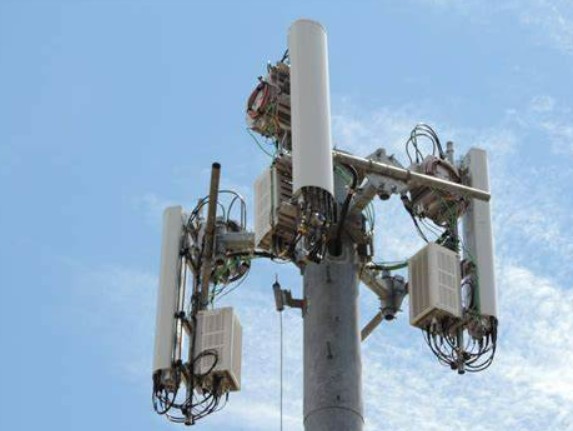BTS Antenna: A Comprehensive Guide
Table of Contents:
I. Introduction
II. What is a BTS Antenna?
III. Types of BTS Antennas
IV. Factors to Consider in Selecting a BTS Antenna
V. Installation and Maintenance of BTS Antennas
VI. Conclusion

I. Introduction
In the world of telecommunications, BTS antennas play a critical role in enabling wireless communication. These antennas are an essential component of the BTS system, which is responsible for transmitting and receiving radio signals between mobile devices and the network. In this article, we will take an in-depth look at BTS antennas, including what they are, their types, factors to consider in selecting them, and their installation and maintenance.
II. What is a BTS Antenna?
BTS antennas are also known as base transceiver station antennas or simply base station antennas. They are designed to be mounted on a BTS tower or rooftop and are connected to the base transceiver station through a coaxial cable. BTS antennas transmit and receive radio signals to and from mobile devices, allowing for voice and data communication.
The design of BTS antennas depends on the specific needs of the network they are serving. They can be omnidirectional or directional, depending on the coverage area required. Omnidirectional antennas radiate signals in all directions, making them suitable for providing coverage in all directions from the BTS tower. On the other hand, directional antennas are designed to radiate signals in a particular direction, providing coverage in a specific area.
III. Types of BTS Antennas
There are several types of BTS antennas, each with its unique features and capabilities. The most common types are:
-
Panel Antenna: This is a directional antenna that has a flat, rectangular shape. It is commonly used in urban areas and indoor environments where coverage is required in a specific direction.
-
Yagi Antenna: This is a directional antenna with a long, narrow shape that consists of several metal elements arranged in a row. It is commonly used in rural areas or in situations where the BTS tower needs to cover long distances.
-
Omni Antenna: This is an omnidirectional antenna that radiates signals in all directions. It is commonly used in urban areas where there are multiple BTS towers and where the coverage area needs to overlap.
-
Parabolic Dish Antenna: This is a directional antenna with a large, curved reflector that focuses radio waves onto a single point. It is commonly used in microwave links for long-distance communication.
IV. Factors to Consider in Selecting a BTS Antenna
Selecting the right BTS antenna is critical in ensuring that the wireless communication network is reliable and efficient. The following factors should be considered when selecting a BTS antenna:
-
Frequency Band: The frequency band used by the network will determine the type of antenna required. Different antennas are designed to operate on specific frequency bands, and using the wrong antenna can result in poor performance and reduced coverage.
-
Coverage Area: The coverage area required by the network will determine the type of antenna required. Omnidirectional antennas are suitable for providing coverage in all directions, while directional antennas are suitable for providing coverage in specific areas.
-
Gain: The gain of an antenna refers to its ability to amplify the signal. Antennas with high gain are suitable for long-distance communication and areas with weak signals.
-
Polarization: The polarization of an antenna refers to the orientation of the electromagnetic waves it radiates. The polarization of the antenna should match that of the mobile devices for optimal performance.
V. Installation and Maintenance of BTS Antennas
The installation and maintenance of BTS antennas are critical in ensuring that they operate optimally and provide reliable communication. The following are some key considerations when installing and maintaining BTS antennas:
Installation: BTS antennas should be installed by qualified professionals who have the necessary knowledge and experience. The installation process should adhere to industry standards and regulations, and the antenna should be positioned correctly for optimal performance.
Grounding: BTS antennas should be grounded to protect against lightning strikes and other electrical surges. The grounding system should be designed to meet the specific needs of the site and should be installed correctly.
Maintenance: BTS antennas require regular maintenance to ensure optimal performance. The maintenance schedule should include visual inspections, cleaning, and testing of the antenna system.
Upgrades: As technology advances, BTS antennas may need to be upgraded to support new features and capabilities. Upgrades should be performed by qualified professionals and should adhere to industry standards and regulations.
VI. Conclusion
BTS antennas play a critical role in enabling wireless communication. They are an essential component of the BTS system and are responsible for transmitting and receiving radio signals between mobile devices and the network. There are several types of BTS antennas, each with its unique features and capabilities. When selecting a BTS antenna, it is essential to consider factors such as frequency band, coverage area, gain, and polarization. Proper installation, grounding, maintenance, and upgrades are critical in ensuring that BTS antennas operate optimally and provide reliable communication. By following industry standards and regulations, wireless communication networks can provide high-quality and efficient communication services to users.

 Mobile Signal Booster
Mobile Signal Booster